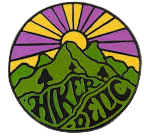Is DMT Addictive?

DMT is a hallucinogenic drug—and more and more people are using it. The National Survey on Drug Use and Health reports that the number of people using DMT more than doubled between the years of 2006 and 2012—from 688,000 in 2006 to 1,475,000 in 2012.
Moreover, according to the survey, 114,000 adolescents aged 12 to 17 used hallucinogens in 2017. Additionally, 1.9 percent of young adults aged 18 to 25 used hallucinogens that year, representing 668,000 young adults.
Therefore, as the statistics show, DMT is a growing problem among teens.
What Is DMT?
DMT (dimethyltryptamine) is a hallucinogenic compound found in a variety of Amazonian plant species. Specifically, it can be extracted from certain plants found in Mexico, South America, and parts of Asia, such as Psychotria viridis and Banisteriopsis caapi.
Therefore, DMT can be taken orally in the form of ayahuasca, a psychedelic plant brew, which is made from plants that contain the drug. Furthermore, it can be synthesized in a laboratory as a white crystalline powder. Subsequently, users snort the powder, smoke it in a pipe, or inject it. In fact, DMT has hallucinogenic properties even at dosages as low as 0.2 milligrams.
Typically, a DMT experience, also known as a DMT trip, lasts between 30 and 45 minutes when users smoke the drug. While DMT has similar effects as LSD or psilocybin (“magic mushrooms”), users sometimes choose DMT because the duration of the trip is much shorter. However, when consumed as a brew, as in ayahuasca, the hallucinogenic effects begin after 30 to 45 minutes, peak after several hours, and may last as long as six to 10 hours.
Clearly, the substance has psychoactive effects and harmful side effects. In addition, it does not have any recognized medical uses, according to the FDA. As a result, it is classified as an illegal drug under the Controlled Substances Act.
DMT street names include Dimitri, “businessman’s trip,” “businessman’s special,” “fantasia,” and “45-minute psychosis.” Moreover, ayahuasca is also known as hoasca, aya, and yagé. Also, DMT has been referred to as the “spirit molecule,” which is the title of a book written by psychiatrist Rick Strassman.
History of DMT Use
DMT has been used in religious practices and rituals for several hundred years, typically in brewed concoctions, such as ayahuasca.
In 1931, British chemist Richard Manske was the first to synthesize the drug. Subsequently, DMT gained popularity as a drug of abuse in the 1960s. As a result, it was placed under federal control when the Controlled Substances Act was passed in 1971.
In the last decade, DMT has regained popularity among drug users. As mentioned above, the number of people using it more than doubled between 2006 and 2012.
How DMT Works
Research shows that hallucinogenic drugs, such as DMT, produce psychoactive effects by acting on specific serotonin receptors in the brain. Serotonin is a neurotransmitter that impacts the brain. Moreover, it is an important neurotransmitter in terms of mood and mental health.
Specifically, some of the primary effects of a DMT hallucination occur in the prefrontal cortex of the brain—an area involved in mood, cognition, and perception. Moreover, hallucinogens impact regions of the brain that help regulate physiological responses to stress and panic.
In addition, scientists have found some evidence that small amounts are naturally produced in the human brain, specifically in the pineal gland. In fact, researchers have suggested that the release of DMT in the brain may be involved in reports of alien abductions, spontaneous mystical experiences, and near-death experiences. However, this theory remains controversial.
DMT and Ayahuasca
Typically, DMT does not produce psychoactive effects when taken by mouth, as opposed to smoking or snorting. This is because the metabolic enzyme known as monoamine oxidase renders the drug inactive.
However, it does produce psychoactive effects when it is taken orally in combination with other plants that prevent it from being metabolized. Consequently, ayahuasca brew is typically made of chacruna leaves, which contain DMT, in combination with other plants containing alkaloids that prevent the user’s body from metabolizing the drug.
Moreover, ayahuasca results in much longer trips than the synthetic form of the drug. Furthermore, ayahuasca creates a number of physical effects, such as nausea and vomiting, that users do not typically experience when smoking synthetic DMT.
DMT Effects on the Mind and Body
Typically, users feel psychedelic effects within a few minutes of taking the drug. These include both psychological and physiological effects. Users can experience “good trips,” in which the feelings and sensations are primarily pleasurable, or “bad” trips, in which they have negative and frightening emotions and experiences.
Moreover, according to American Association of Poison Control Centers, DMT taken in high dosages has resulted in respiratory arrest and coma. Furthermore, it could have serious adverse consequences for users with pre-existing psychological problems or a diagnosed mental illness, such as schizophrenia.
Additionally, combining with prescription drugs, alcohol, cocaine, opioids, and other substances is extremely dangerous.
Psychological effects of DMT include the following:
- Depersonalization—feeling detached from one’s thoughts and feelings
- Altered sense of time and space, including body image and proprioception
- Visual and auditory hallucinations
- Out-of-body experiences
- Perception of bright, intensified color
- Sense of losing control
- Disorientation or confusion
- Feelings of euphoria
- Or, on the other hand—negative emotions, such as fear, anxiety, grief, anger, or agitation
- Fear of going insane or dying
- Violent or unpleasant imagery or sounds
- Reliving painful memories or traumas
- Perceived insights or epiphanies, often believed to have come from divine or otherworldly beings.
Along with psychological effects, users also experience physical symptoms. Physiological effects of DMT usage include the following:
- High blood pressure
- Increased heart rate
- Seizures
- Dilated pupils
- Nystagmus—involuntary rapid, rhythmic movement of the eye
- Dizziness
- Ataxia—lack of coordination
- Nausea and vomiting (typically when taken orally in ayahuasca)
- Respiratory arrest
- Coma.
Long-Term Effects of DMT Abuse
As well as short-term side effects, risks include long-term adverse effects. Specifically, long-term effects of can include psychosis, frequent flashbacks, and hallucinations even when the user is not on the drug. In fact, some users may continue to experience flashbacks or hallucinations for months or even years after using DMT.
Furthermore, frequent use of hallucinogens such as DMT can lead to a condition known as persistent psychosis. Symptoms of persistent psychosis include the following:
- Mood disorders
- Disorganized thinking
- Ongoing, persistent paranoia
- Visual disturbances.
Another mental health problem associated with the frequent use of hallucinogenic drugs is Hallucinogen persisting perception disorder (HPPD). Symptoms of HPPD include hallucinations and visual disturbances. Moreover, HPPD can result in symptoms similar to those of other neurological problems, such as brain tumors or stroke.
Is DMT Addictive?
Thus far, researchers have not found evidence that DMT causes physical dependence or addiction. Moreover, users typically do not develop a tolerance for the drug, according to the National Institute on Drug Abuse.
However, users who take it frequently may develop psychological cravings for the drug. Furthermore, abuse can create additional problems when the user combines it with other psychoactive substances.
“Other hallucinogen use disorder” is the name for an ongoing pattern of problematic hallucinogen use, causing significant problems or distress. Symptoms of this disorder in the case of DMT include the following:
- Using more than originally intended
- Inability to control or stop using
- Expending excessive time and energy to obtain and use DMT
- Taking long periods of time to recover from the effects
- Craving the drug
- Neglecting personal responsibilities and obligations in order to use
- Continuing to use despite increasing negative issues with mental health, physical health, relationships, work, or social interactions
- Ignoring or abandoning friendships, positive habits, or avocations in favor of spending that time to use the drug.
Treatment for DMT Abuse
Currently, there are no FDA-approved medications for the treatment of DMT addiction. However, clinical, experiential, and behavioral therapies can help teens struggling with addiction to the drug. Furthermore, residential treatment is often the most effective approach for teens addressing substance use disorder.
Below are therapeutic modalities that support recovery from substance use disorder.
Individual, group, and family counseling: One-on-one counseling, as well as counseling sessions with family members and with peers, help teens to address the underlying factors contributing to substance abuse—such as depression, anxiety, low self-esteem, and trauma.
Dialectical Behavioral Therapy (DBT): DBT helps people identify their strengths and build on them, while also identifying the thoughts, beliefs, and assumptions that make life more difficult.
Cognitive Behavioral Therapy (CBT): CBT helps teens identify and modify their thought and behavior patterns, shifting them from the negative toward the positive.
Recovery Lifestyle: A recovery program can help teens develop a strong sense of self-acceptance, in addition to self-worth. As a result, this ensures a lifelong commitment to personal recovery and happiness.
Motivational Enhancement Therapy or Motivational Interviewing: This approach inspires adolescents to seek healing and transformation through their own volition, rather than in response to threats, coercion, or reward.
Acceptance Commitment Therapy (ACT): ACT combines acceptance and mindfulness strategies with commitment and behavior-change strategies to increase psychological flexibility.
In conclusion, while DMT is not physically addictive, it can be psychologically addictive. In addition, use presents dangerous risks to both physical and mental health.
Therefore, teens need education to prevent them from using this drug. Moreover, teens who become dependent on this or any hallucinogenic drug should receive treatment as soon as possible.



